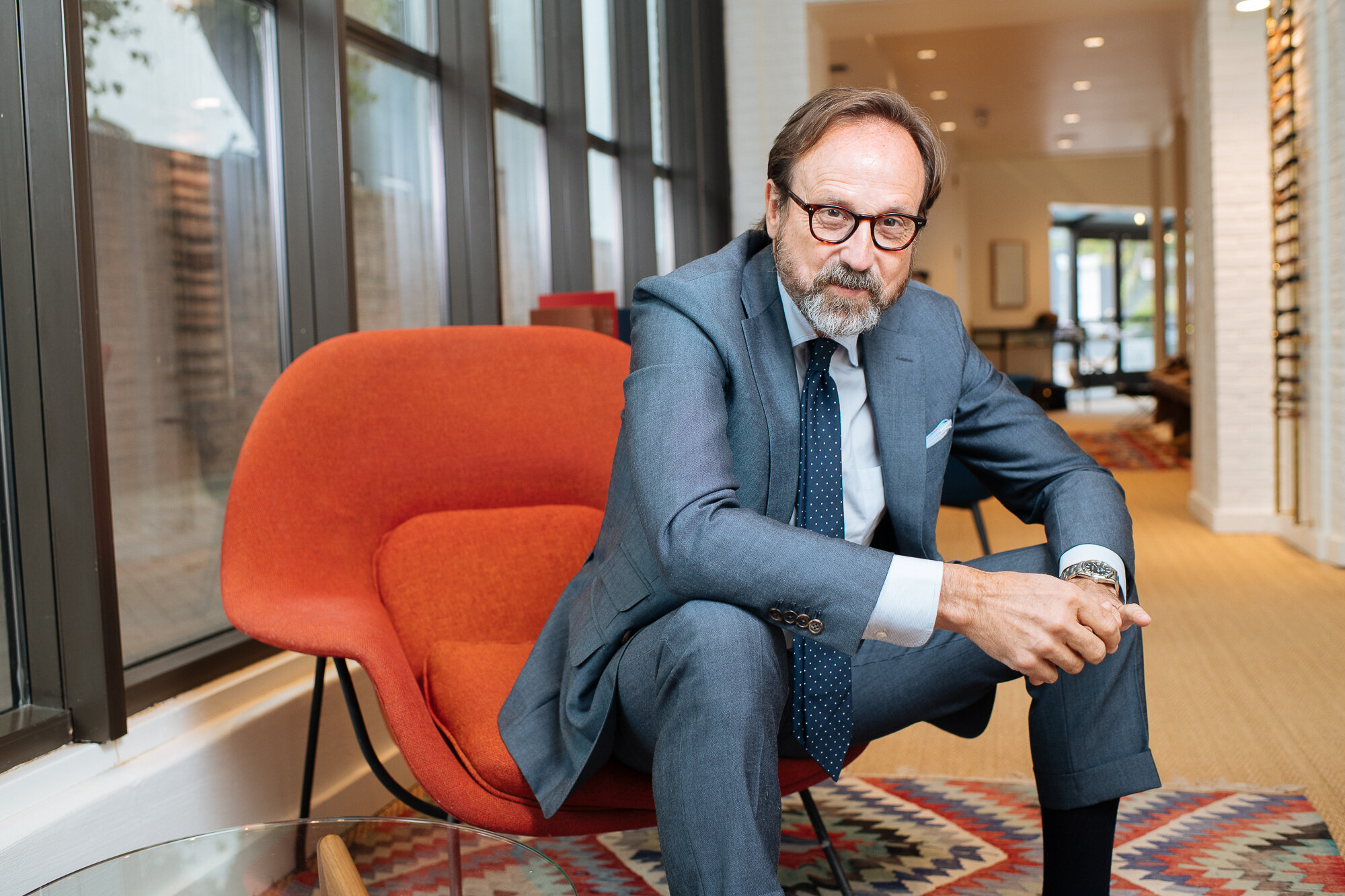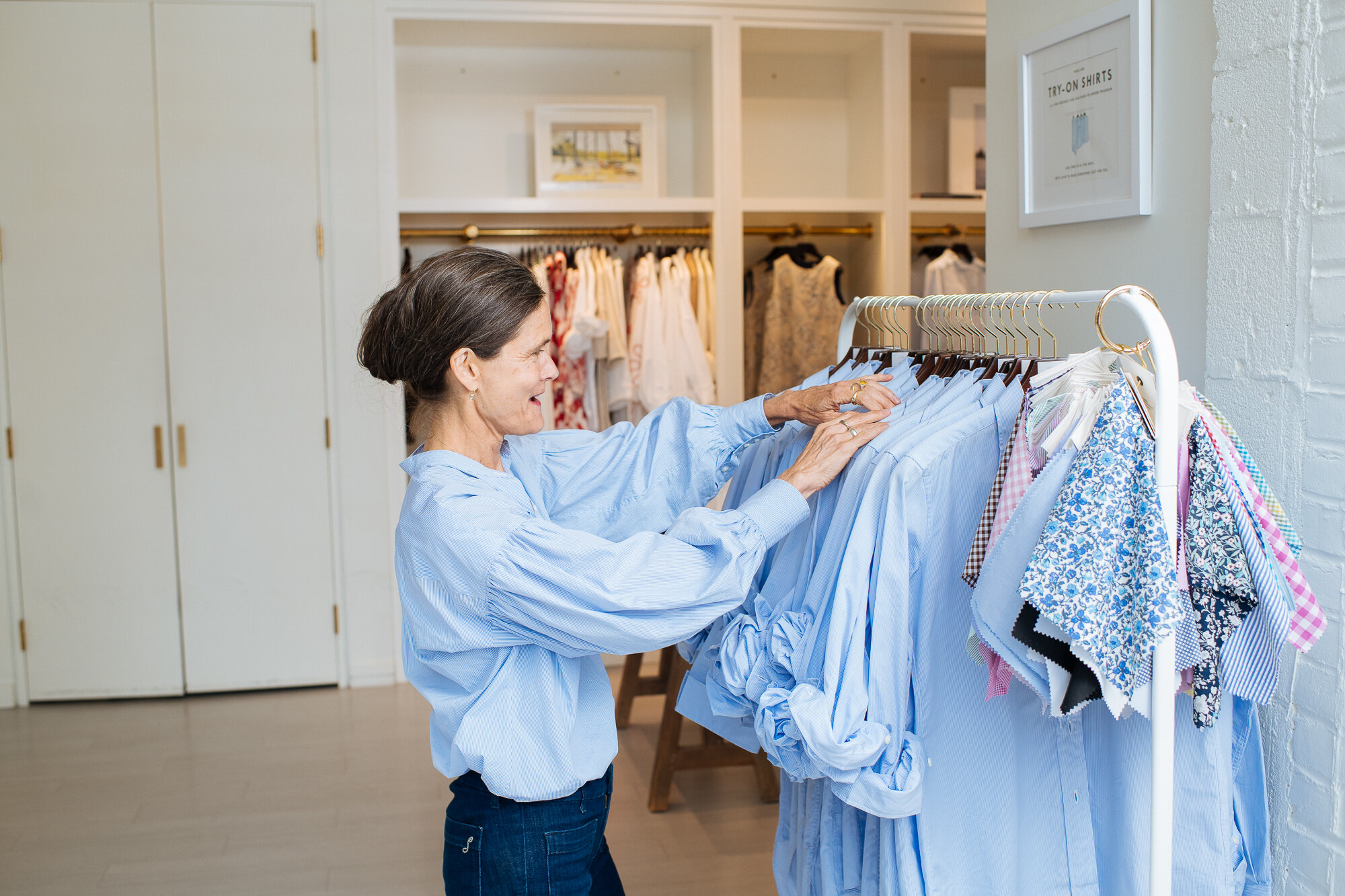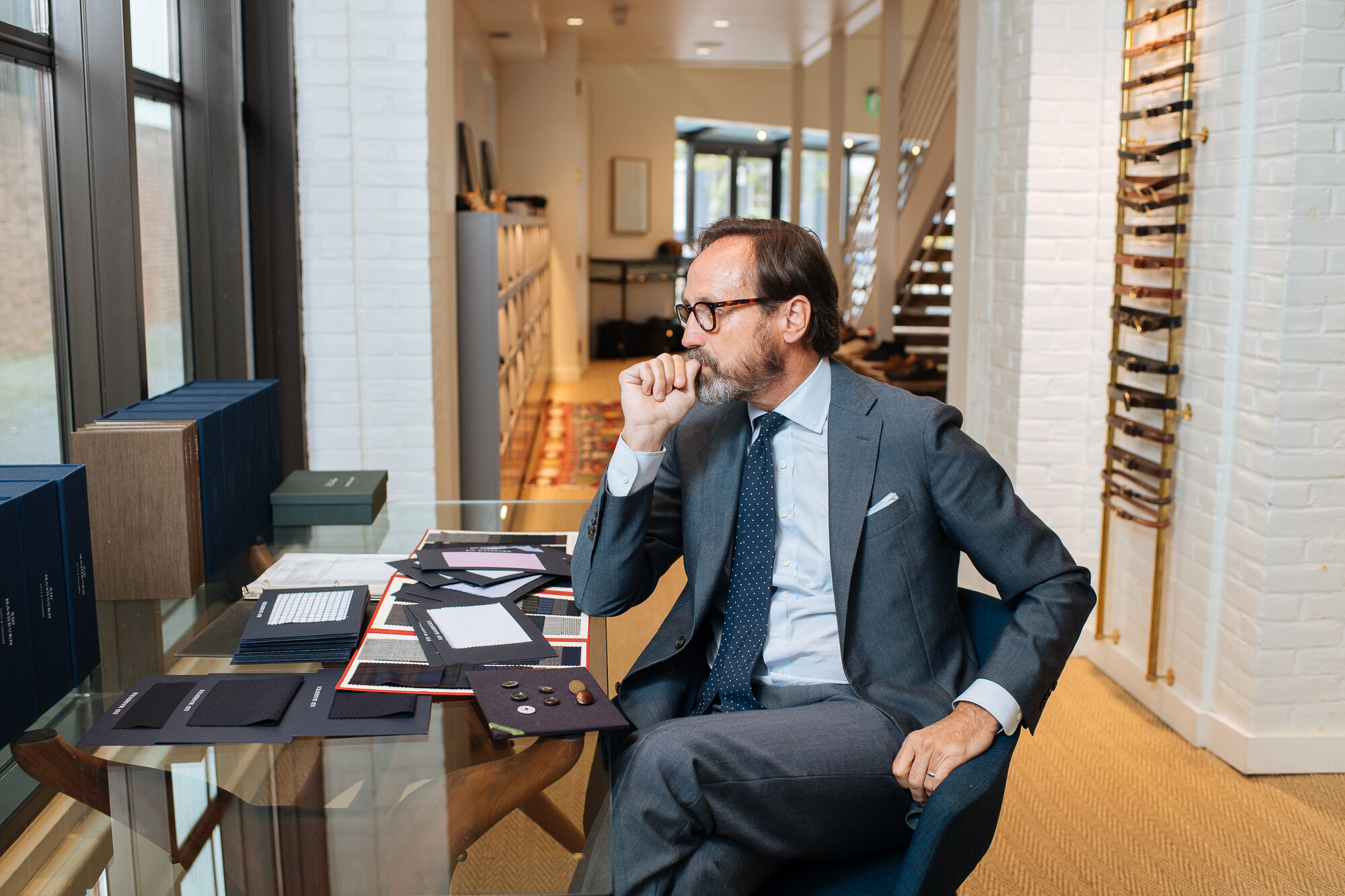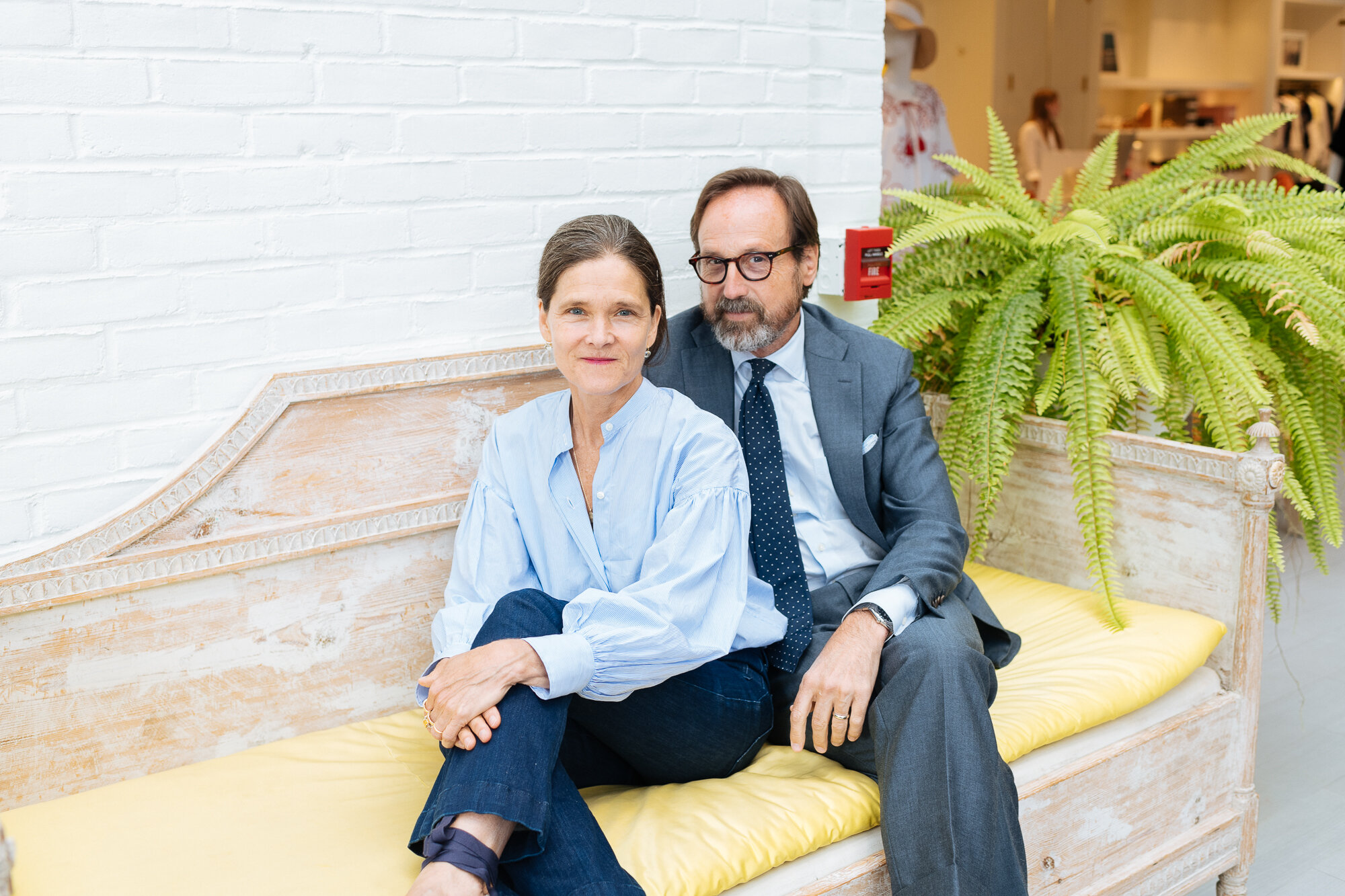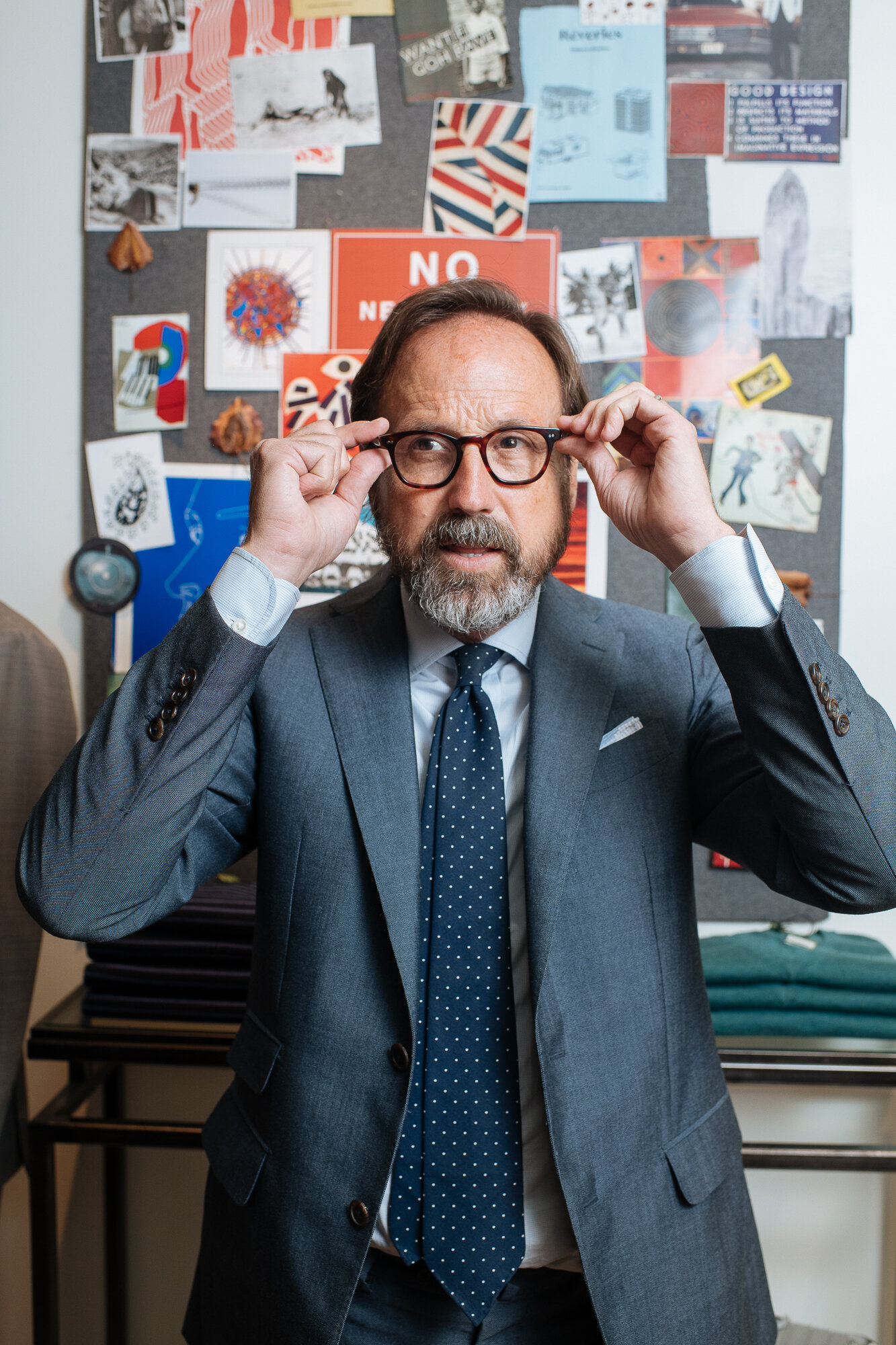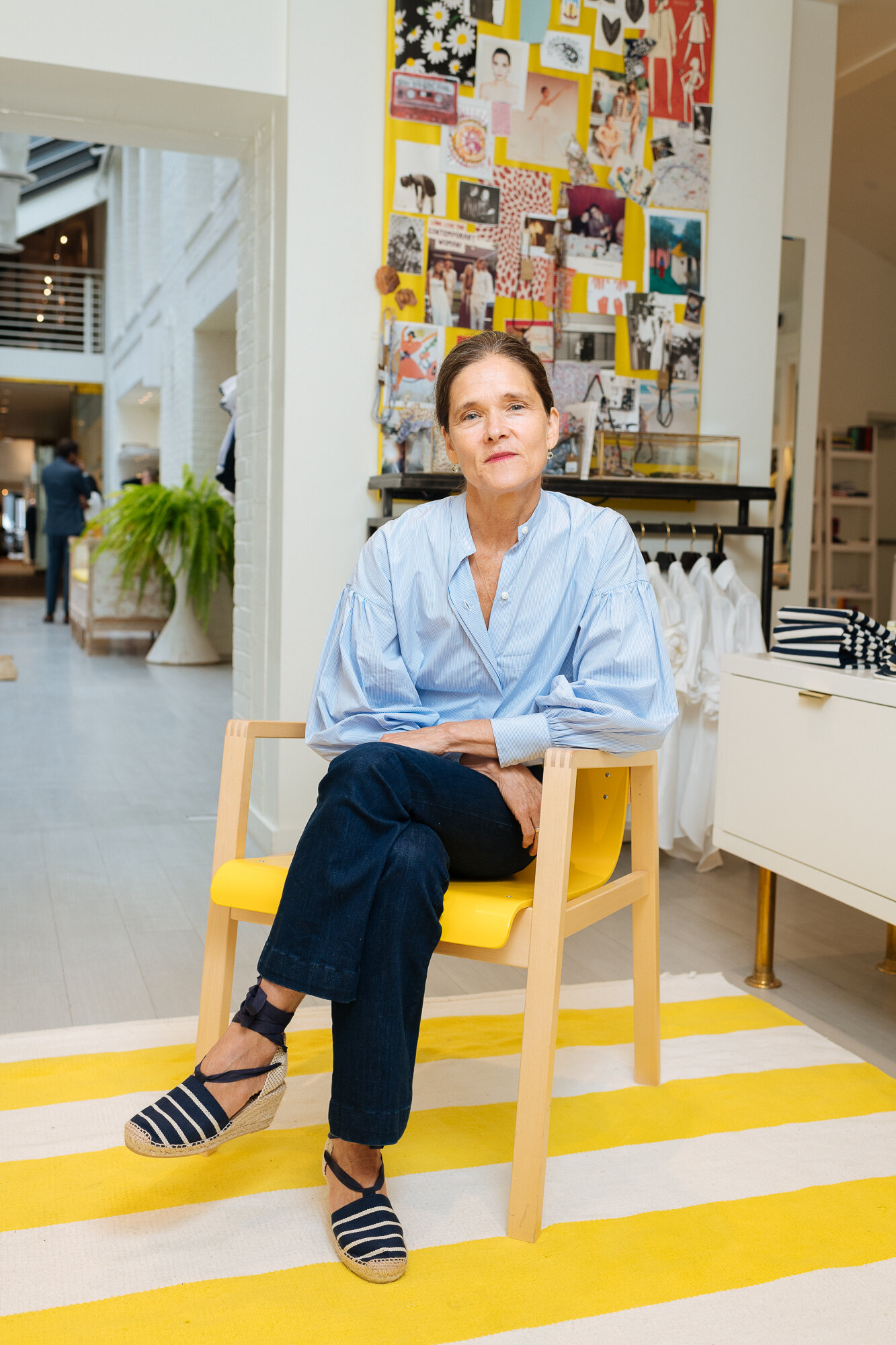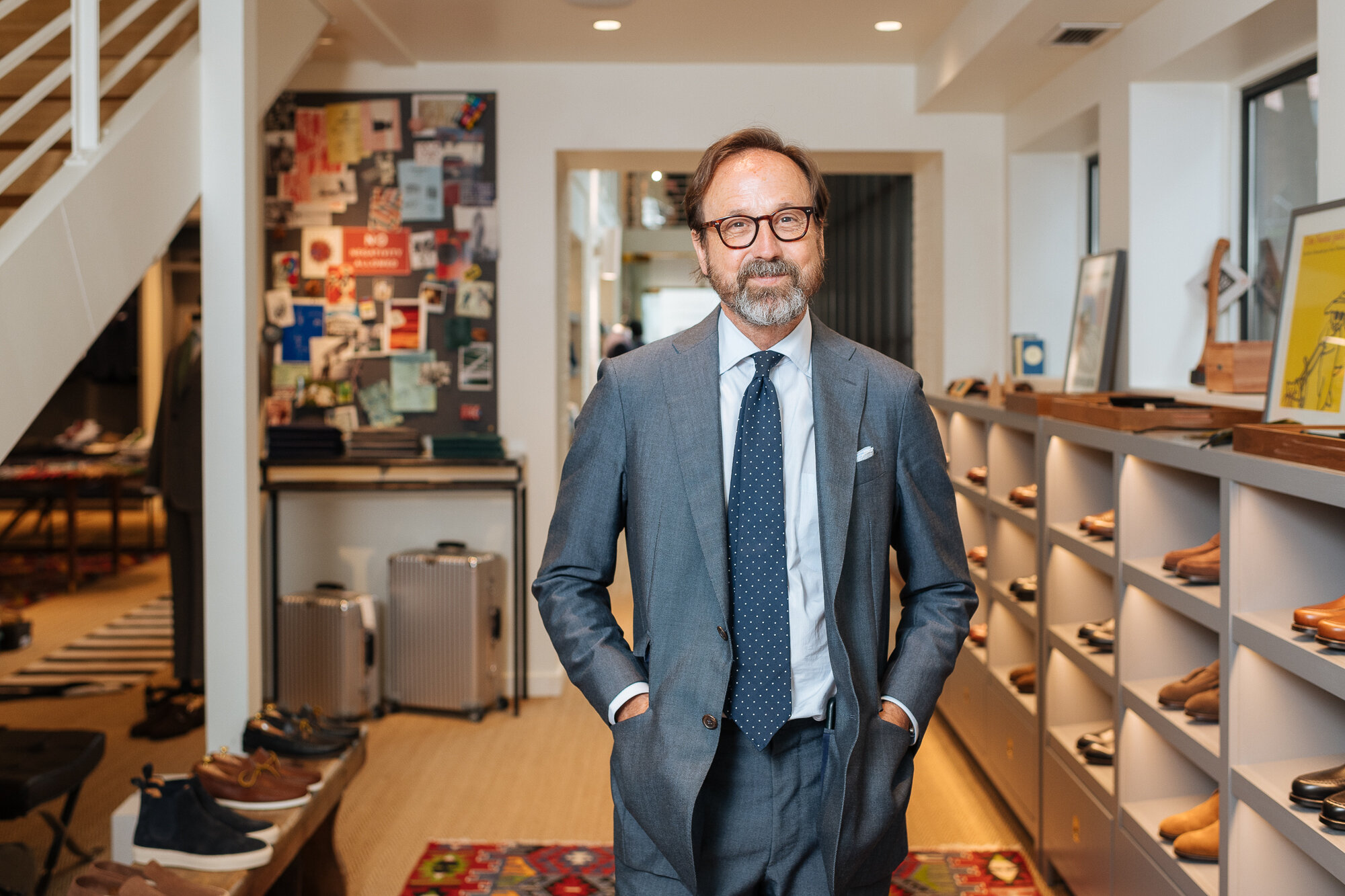‘We See Fashion As a Chance to Connect With People’
Sid and Ann Mashburn
Founders, Sid Mashburn & Ann Mashburn
3206 N St NW
In fourth grade, Sid Mashburn came home with a brown pinstripe suit and matching spectator shoes he’d picked out for Easter. In 1960s Mississippi, his parents weren’t having it.
‘They were like, ‘Go back to the store now.’ I said I love it so much, I’ll do anything to have it.’
Sid loved clothes from an early age—taking fashion advice from his two sisters, and a sharp-looking older brother who dressed like someone from a 60s detective show. Through each fashion era, he was one step ahead of his peers.
‘I went through the awkward transition from disco to preppy. I looked like David Bowie with a pair of Bass Regency loafers. By 1974, I went to straight leg jeans when everyone else was wearing elephant flairs. I remember being at the concession stand at a Peter Frampton concert with my friend, and he was like, ‘Those pants man, where did you get those?’’
As soon as Sid got his driver’s license, he found a job at a men’s clothing store. By the time he was a sophomore at the University of Mississippi, he told his parents he wanted to drop out for fashion school. In 1970s Mississippi, his parents weren’t having it.
‘My dad was a chemist, my mom was a bookkeeper. They didn’t know what fashion school was, and didn’t understand that it could be a career. My dad told me to finish school, and then I could do what I want. He said sell the Monte Carlo, go to New York, and see what you can do.’
Sid did just that—moving after graduation and working as a sales rep at British Khaki, where a mentor taught him how to analyze fabrics and fits. It was invaluable experience; more applicable than anything he could have learned in fashion school.
Across town, Ann Mashburn was interviewing at magazines and advertising agencies. She’d graduated from the University of Colorado with a business degree, but wanted to do something more creative with her life.
‘I always loved clothes and storytelling—the fantasy of it. I wouldn’t say I was ever a fashion girl myself—that hardly existed then—but I got the September issue of Seventeen magazine every year and looked at all the clothes. And then suddenly I’d landed in the Vogue office, and completely had The Devil Wears Prada life.’
Both rising stars in their own right, Sid and Ann soon met in New York and eventually married, bonding over a shared love of design. He found success designing for J. Crew, Ralph Lauren, and Tommy Hilfiger; she, graduating from Vogue assistant to fashion editor. When their time in New York ran its course, they moved to Atlanta and had five daughters.
In 2007, when their oldest was a senior in high school, Sid branched out on his own—opening the first Sid Mashburn men’s boutique. He and Ann had no intention of opening a women’s store, but three years later a small retail space became available next door, and the opportunity was too good to pass up.
‘I had all this great experience as a fashion editor, and my oldest daughter was like, ‘Come on, you’re both working like crazy on this, but dad gets all the attention,’’ Ann says. ‘She started helping me, and Ann Mashburn evolved.’
More than 10 years later, the sister stores have locations in Georgetown, Houston, Dallas, and Los Angeles, with their Atlanta headquarters employing more than 75 people.
Sid and Ann travel relentlessly between the five cities and employ three of their daughters, making it impossible to separate their work and home lives. Ann says it isn’t healthy to work with your spouse, but there’s no turning back now.
‘Sid drives me crazy because he’s so strong-willed, and so am I. We butt heads a lot. But we have to trust each other on certain things. He knows so much about men’s design, and I would never argue with him on that, but he always asks my opinion. I have no design experience, but I was a fashion editor and I know what I love, and how to create an idea and a story. He needs me for the editorial part of things. We have to work collaboratively.’
Much of Sid and Ann’s success—in business, and in love—seems to stem from their unique yet complimentary perspectives. Ann is the classically simple to Sid’s hippy prep; the storyteller to his style. It takes her two minutes to get dressed for a night out; another 20 minutes for him.
‘I like to look great and I really delight in feeling pretty, and other people looking that way, but I’m practical,’ Ann says. ‘I appreciate fashion, but I’m more about knowing enough about clothes so that you can get yourself dressed and look your best, and feel the most like yourself. I’m in a rush all the time, and I don’t like to take a lot of time. I like clothes, just less of them.’
Sid, well, he likes all of them. Still, he understands Ann’s practicality, and recognizes that many customers feel the same—in need of someone to help them navigate an endless number of wardrobe options.
‘People are really looking for help. Often, they’re loath to ask—particularly guys. But women, in a weird way, need the help as much or more than men. Their options are so much harder to navigate. The working world is so different today. My dad basically wore a uniform to work. You knew what you were getting it. Today, it’s another story. More choices make it harder.’
Sid and Ann say most people only use 30% to 50% of their closet. They don’t need a lot of choices, just the right choices. That’s where they come in.
‘What’s really cool about fashion is that it’s the chance to connect people, and it’s an intimate relationship,’ Sid says. You feel like you’re doing a service. Fashion and service and hospitality, where they dovetail is where we are.’
The decision to open in Georgetown was very much rooted in service—or the lack thereof, after the Georgetown clothing institution Britches closed.
‘Britches had a heritage here, and we saw this huge opportunity,’ Sid says. ‘We’re proponents of brick and mortar like no one else is, and we’re big believers in community building. We wanted to be that local purveyor. Plus, with the amount of guys who wear suits and dress up here, it’s a natural fit.’
So, too, on the women’s side. Ann says the brand is perfectly aligned with the staggering number of professional, working women she’s encountered in DC—more here than in any of their other markets—yet everything’s designed to have a broader appeal.
‘I hope women will come in at every different stage of life,’ Ann says. ‘My 18-year-old wears our clothes in a certain way, and my mother wears them in another way. I’m just a woman lover. I want women to feel really good and be able to wear clothes that suit them.’
‘When we wrote the business plan for both stores, we didn’t want a specific demographic,’ Sid adds. ‘It’s not as much fun.’
As Sid and Ann reckon with an ever-changing retail world, they recognize the importance of retaining their diverse customer base through e-commerce and digital marketing. Ann launched a blog last year, and has put greater focus on the companies’ Instagram accounts. The mediums are drastically different from her print days at Vogue, yet the driving force remains the same.
‘The tip of my spear is storytelling, and it’s more important now than ever before in everything Sid and I do. People want to connect to something.’
A brand, or a feeling—or maybe just a brown pinstripe suit with matching spectator shoes.
